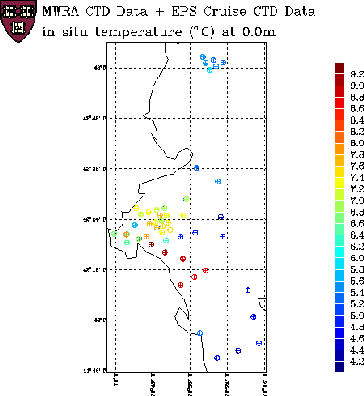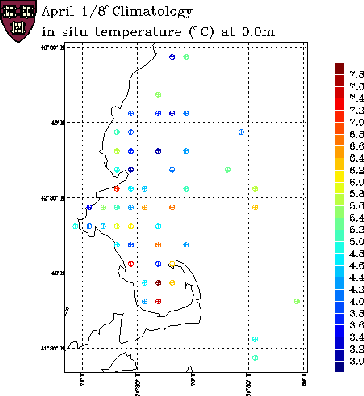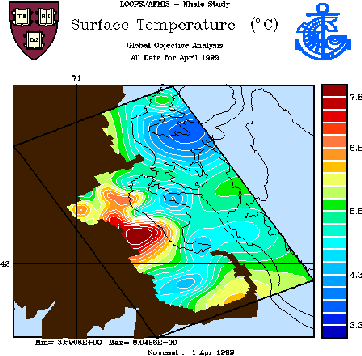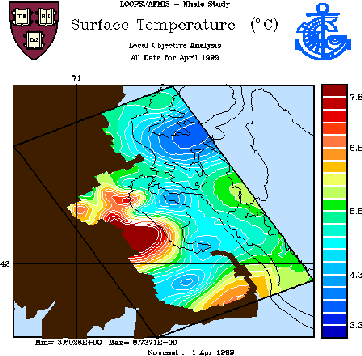
|

|

|
| Back Home | References |
The mapping of irregular observations to three dimensional data is accomplished using Objective Analysis techniques. Objective Analysis utilizes the Gauss-Markov or minimum error variance criterion to map the available data onto horizontal grids. The process repeats for different vertical levels and analysis times. HOPS includes two flavors of Objective Analysis: the full-matrix (global) Objective Analysis (OAG) and a local approximation (OA). Both OA's are actually 2-level OA's producing first a slowly varying "mean" field from synoptic data and/or climatology. A 2nd level OA maps the synoptic data onto this mean field.

|

|

|
The local objective analysis program uses a local approximation to the full correlation matrix. In particular, it allows the user to limit the contributions to a pre-specified number of the most strongly correlate points. (Historically, this package was developed after a student "burned up" an entire year's allocation on a supercomputer for one analysis.) This approximation gives the local OA an advantage in speed, but tends to produce noisier output.
The global objective analysis program inverts the entire correlation matrix. This produces naturally smooth fields at a cost of time and the memory requirements of the program. In the cases where these costs are acceptable, the global OA is highly recommended over the local OA.

|

|
| Directory | Files | Date (MM/DD/YYYY) |
Size Compressed (bytes) |
Size Uncompressed (bytes) |
| OA/ | Readme.oa | 01/23/2001 |  |
21733 |
| oa_6.6.tar.Z | 01/23/2001 | 139905 | 552960 | |
| Ex_oa_6.6.tar.gz | 01/23/2001 | 4866091 | 7809024 | |
 |
 |
 |
 |
 |
| OAG/ | Readme.oag | 01/23/2001 |  |
21315 |
| oag_5.6.tar.Z | 01/23/2001 | 135854 | 534528 | |
| Ex_oag_5.6.tar.gz | 01/23/2001 | 4874217 | 7821312 |